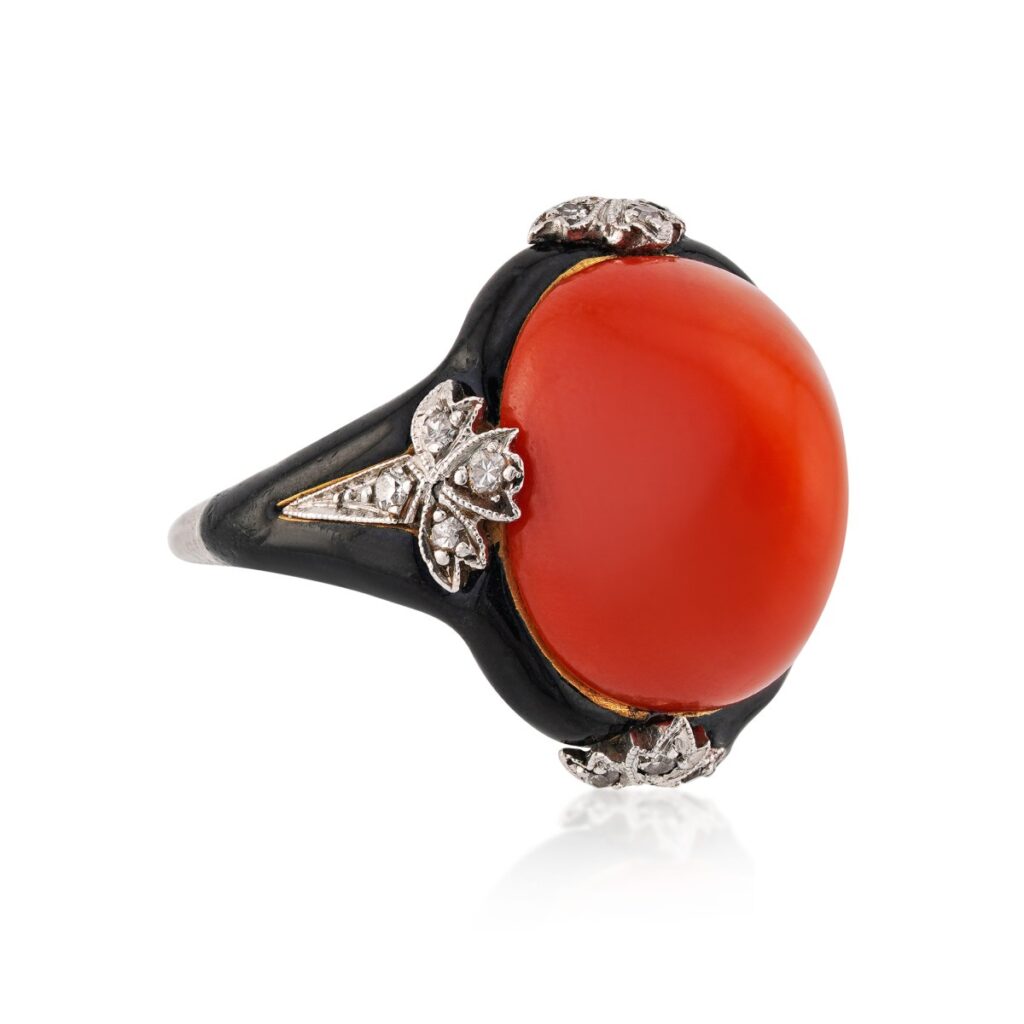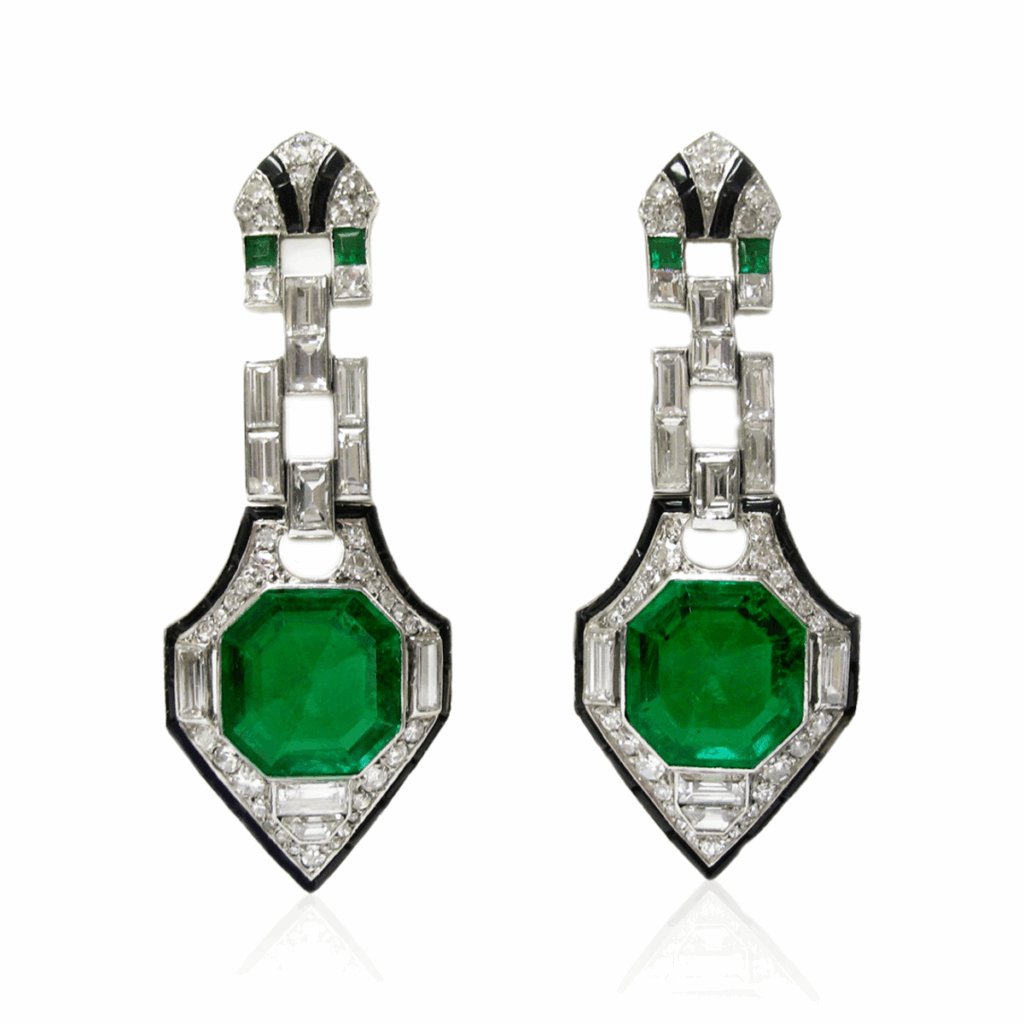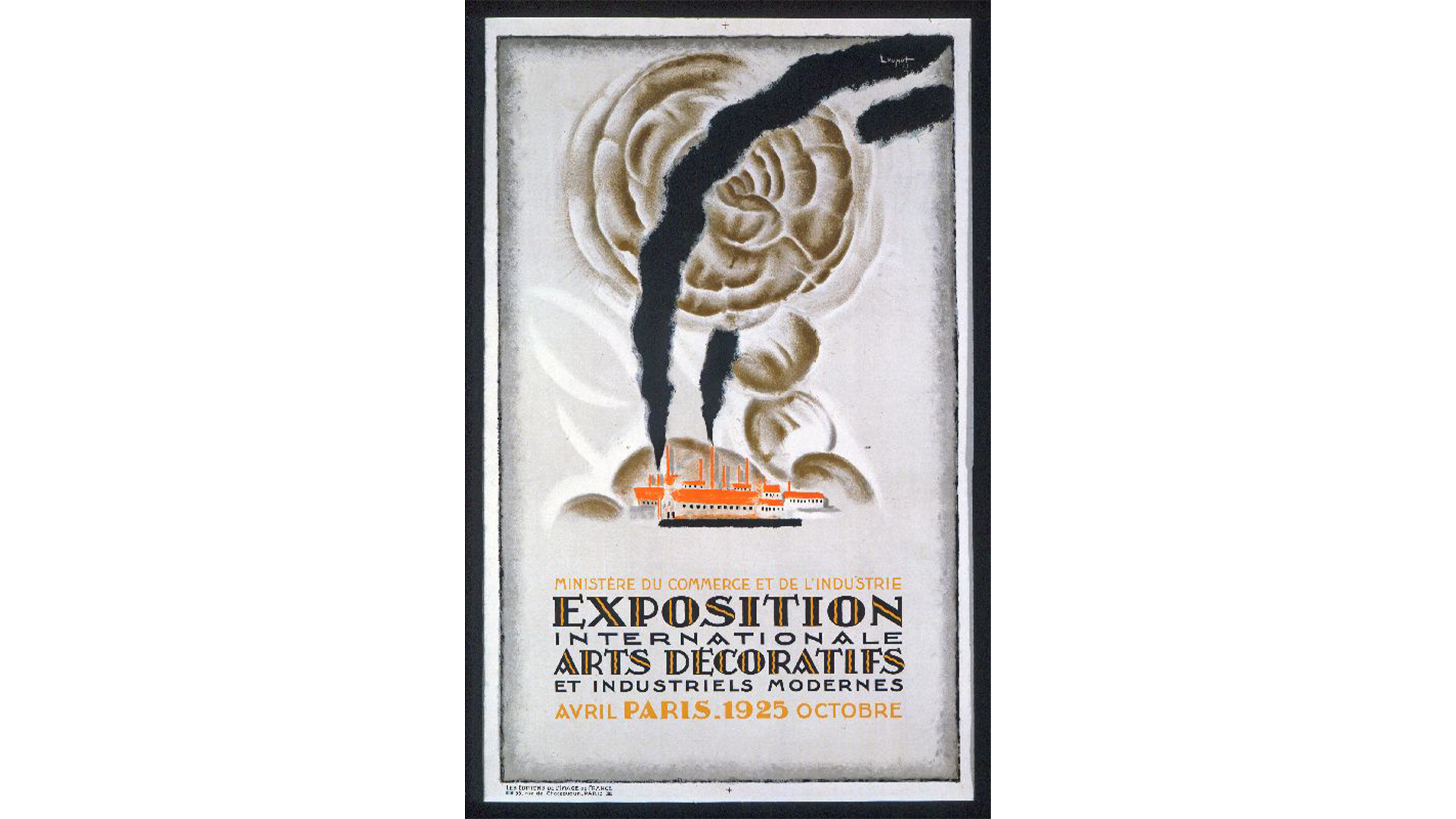One of the most influential design movements of the 20th century, Art Deco has now officially turned 100 years old. Launched into the world at the Exposition Internationale des Arts Décoratifs et Industriels Modernes, (International Exhibition of Modern Decorative and Industrial Arts) in Paris, running from April through November 1925, the fair introduced the world to this new “modern” design movement that swept the globe and has remained a popular style ever since. The Exposition had 15,000 exhibitors from around the world and over 15 million visitors during its six month run. Art Deco encompassed every area of design including architecture, furniture, art, home accessories, movies, jewelry and fashion.
The Beginning

While Art Deco made its formal debut in 1925, it had been many years in the making. A group of artists, Société des Artistes Décorateurs (The Society of Decorative Artists), looking for more recognition for their work petitioned the French Chamber of Deputies for an event where their talents would be the focus. The government agreed in 1912, believing that the event would once again showcase the design leadership of France. The Exposition was set to take place in 1915, but had to be delayed twice. First due to the outbreak of World War I and then again because with the war recently over, it was hard to get enough materials to build the infrastructure for the fair. Finally, in 1925 the Exposition Internationale des Arts Décoratifs et Industriels Modernes arrived, bringing with it a message of modernism, that was mandated by the organizers who stated in the program that it was “open to all manufacturers whose products are artistic in character and show clearly modern tendencies.” In addition to furniture and other decorative arts, jewelry was also a big part of the exhibition with major players attending including Cartier, and Raymond Templier. Van Cleef & Arpels was honored with the Grand Prize for its “Entwined Flowers, Red and White Roses” bracelet.
The Art Deco Difference

Art Deco was different from design styles of earlier eras. The free flowing curls, curves and naturalistic influences of the Art Nouveau era gave way to the exact opposite. Structure, straight lines, simple shapes, symmetry, repeating patterns and bold use of color, all characterized Art Deco, which embraced machinery and industrial materials. Steel, aluminum and chrome were used to convey this new design message. It was a shift from nature inspired to machine inspired, a move into a more modern world that was changing rapidly due to faster transportation and technological advances.
The Art Deco movement started in Paris, but found a big following across the Atlantic in the U.S., especially in New York City where the style was used to design a number of iconic landmarks including both the Chrysler and Empire State buildings and Rockefeller Center. Miami Beach was another hot spot and is known for its Art Deco district that continues to attract tourists today.
Art Deco Influences
Although Art Deco started as a French design movement, it also brought in elements and influences from around the world. African masks, Asian influences from Japan and China as well as Islamic art all contributed ideas to Art Deco design, creating an exotic, sophisticated feeling against a backdrop of opulence. Egyptian motifs sparked by the discovery of King Tutankhamen’s tomb in 1922, were also prominent.
The avant-garde Cubist movement started by artists Pablo Picasso and Georges Braque in the early part of the 20th century, with its angular, geometric forms was also a big influence in Art Deco design. Another important contributor to the Art Deco aesthetic was the Bauhaus (1919-1933) art school in Germany, which encouraged the exploration of minimalism and pared-back simplicity in all of the decorative arts. The focus was on abstract and geometric shapes and function with no frills or embellishment.
Art Deco Lifestyle

While Art Deco was a design trend, it also represented a mindset and a lifestyle that was first associated with the wealth and prosperity of the 1920s. It was a sophisticated, highly stylized look that was meant to evoke the promise of progress, hope and optimism. The sunburst motif that symbolized energy and positivity was popular. Chevron and zig-zag patterns, along with vertical lines, suggesting movement spoke to the moment when people were embracing change and admiring modernism. Some of that changed when the stock market tanked in 1929 ushering in an economic depression that lasted through the 1930s, yet the style remained, with designs becoming more rounded and more aerodynamic in form with less embellishment, yet still bold. The 1930s style was sometimes referred to as Streamline Moderne.
To honor the 100th anniversary of Art Deco, there are a number of museum exhibitions planned throughout the year to showcase the beauty of the era, below are a couple of shows in Paris and New York to get you started.
The Musee des Arts Decoratifs, Paris:
Paul Poiret: Couturier, Decorator & Perfumer, June 25, 2025 – January 11, 2026.
1925-2025: One Hundred Years of Art Deco, October 21, 2025 -February 22, 2026.
Museum of the City of New York, New York City:
Art Deco City: New York Postcards from the Leonard A. Lauder Collection, now through February 17, 2026.
Top of Page: Trade Ministry and Modern Industrialists – Poster of the International Decorative Arts Exhibition 1925. The Wolfsonian–Florida International University, Miami Beach, Florida, The Mitchell Wolfson, Jr. Collection, courtesy WikiCommons.
Authored by Amber Michelle

